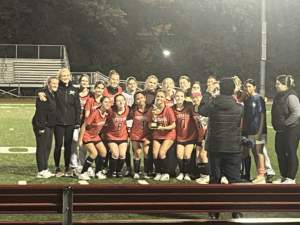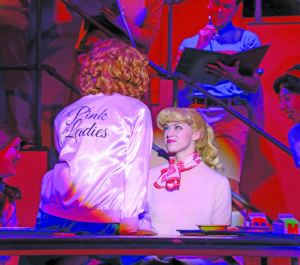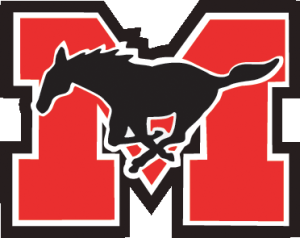
The City of Falls Church will benefit from revenues generated by the planned introduction of tolls on Interstate 66 next year in the form of $854,000 for the installation and operation of bike sharing, a planner for the Northern Virginia Transportation Commission told the monthly luncheon of the Falls Church Chamber of Commerce last week.
Dan Goldfarb, a veteran 24-year planner and program manager with the NVTC, assured the audience of local business owners and leaders that the toll program, which will be introduced during peak hours in each direction on I-66 about a year from now, will benefit a wide range of regional projects in addition to the one slated for Falls Church, with the long-term overall effect of “benefiting the toll payer” by moving more people and reducing congestion.
Among the major goals of the programs that will receive toll revenues will be “diversion mitigation,” he said, which is a big issue for communities like Falls Church who fear that the tolls will drive people to look for alternatives, such as cut-throughs through the residential neighborhoods of Falls Church.
The toll program will be an advantage for those seeking to use I-66 during peak hours when now they are faced with “High Occupancy Vehicle” (HOV-2) restrictions. Anyone will be eligible to ride on the interstate who can pay the toll, even as a solo driver, he said. On the other hand, for the non-toll use of the road, the minimum of two passengers will be upped to three by 2020.
Currently, Goldfarb said, only 60 percent of those who drive on I-66 during HOV-2 restrictive hours are actually multi-passenger bearing cars. The rest are headed for the airport and hybrids, both exempt, bus or service vehicles or cheaters. Money taken in fines derived from cheaters go to traditional destinations by way of the judicial system, and are of no special benefit for mitigating congestion.
Among the benefits of the revenues from the toll program are “real time information” screens, including 50 in Arlington and 17 in Alexandria, that will also be made available in a smart-phone application.
There will be bus stop consolidations along major bus routes in the area, with fewer stops being the result, while there will be more information provided at the bus shelters.
On the Arlington Regional Transit lines, the frequency will be doubled in Rosslyn to East Falls Church Metro corridor, and WMATA 2A bus service will be expanded between the Dunn Loring and East Falls Church Metro stations.
The Fairfax Connector bus service will be expanded linking Centerville to the Foggy Bottom Metro station in D.C. along I-66, and there will be new buses linking the Pentagon to the Mark Center in Alexandria. In Loudoun County, a park and ride will be developed linking Aldie to the McPherson Square Metro station in D.C., and in Prince William County a commuter bus will be added to link Gainesville to the Pentagon.
A total of 19 new projects at $42 million a year will be introduced.
“Slugging,” the practice of persons showing up at a designated stop to grab a ride from any stranger’s car pooling to a destination, called “dynamic car pooling,” will also be encouraged.
The NVTC is also advancing plans to introduce “bus rapid transit” on Route 7, or Broad Street, running through Falls Church from the Spring Hill Metro station in Tysons Corner to the Mark Center in Alexandria, consisting of an 11-mile run along Route 7, mostly in dedicated lanes, leaving Route 7 briefly in Falls Church to connect to the East Falls Church Metro station.
This recommended mode followed studies of alternative options including light rail and enhanced bus service. A Route 7 Corridor Study found that construction and operating costs for bus rapid transit are 70 and 40 percent lower than with light rail, and is expected to draw 9,500 new transit riders per day.
Dedicated lanes are likely to be very limited along the Route 7 corridor running through the commercial area of Falls Church, given the limited ability for widening the road through that portion.
Public hearings on the Route 7 plan have been scheduled for the next two weeks, including June 6 at the Mark Center in Alexandria, June 8 at the Glen Forest Elementary School in Greater Falls Church, and Tuesday, June 14 at the Mary Ellen Henderson Middle School in the City of Falls Church, all meetings beginning at 7 p.m.










